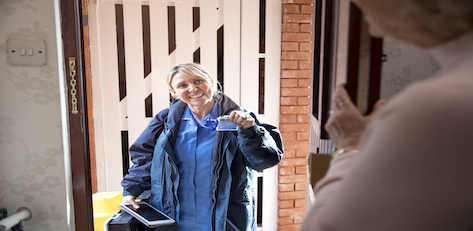Introduction
Lone worker training refers to educational programs designed to prepare individuals for working alone or in remote or isolated environments. The purpose of lone worker training is to provide participants with the knowledge, skills, and strategies they need to stay safe, manage risks, and respond effectively to emergencies while working alone.
Lone workers face unique safety challenges compared to those working in teams or with immediate supervision. Some of these challenges include:
Limited Assistance
Lone workers lack immediate access to assistance or support in the event of an emergency or crisis. Without colleagues or supervisors nearby, they may face delays in receiving help, which can exacerbate the severity of the situation.
Isolation and Loneliness
Working alone can lead to feelings of isolation and loneliness, which can impact mental well-being and increase vulnerability to stress, anxiety, and depression. The absence of social interaction and support networks can contribute to a sense of disconnection and isolation.
Contact Us
Medical Emergencies
Lone workers may face challenges in receiving timely medical assistance in the event of a medical emergency, such as sudden illness or injury. Without colleagues to provide first aid or call for help, they may experience delays in accessing medical care, which can impact the outcome of the emergency.
Environmental Hazards
Lone workers may be exposed to environmental hazards, such as extreme weather conditions, wildlife encounters, or natural disasters, depending on the nature of their work. Without immediate assistance or evacuation plans, they may be at greater risk of harm or injury in hazardous environments.
Reduced Supervision and Oversight
Without direct supervision or oversight, lone workers may have less accountability for their actions and decisions. This can increase the risk of complacency, unsafe behaviour, or neglect of safety protocols, as there may be less incentive to adhere to guidelines without immediate supervision.
Increased Risk of Accidents and Injuries
Lone workers may face a higher risk of accidents and injuries due to factors such as working in hazardous environments, performing high-risk tasks without assistance, and encountering unexpected hazards or obstacles. Without colleagues to provide assistance or intervene in emergencies, lone workers may be more susceptible to accidents or injuries.
Increased Vulnerability to Violence and Harassment
Lone workers are at higher risk of encountering violence, harassment, or aggression from clients, customers, or members of the public, particularly in industries such as healthcare, social services, retail, and transportation. Without the presence of colleagues or witnesses, they may be more vulnerable to verbal or physical abuse.
Limited Communication
Communication challenges can arise for lone workers, particularly in remote or isolated environments where cellular or radio signals may be weak or unavailable. This can hinder their ability to maintain regular contact with supervisors, colleagues, or emergency services, leading to difficulties in seeking assistance or reporting incidents.
Overall, lone workers face a range of unique safety challenges that require careful consideration and proactive measures to mitigate risks and ensure their well-being. Employers must prioritize lone worker safety by implementing appropriate training, communication protocols, emergency procedures, and support mechanisms to address these challenges effectively.
Why Lone Worker Training is Essential
Our Approach to Lone Worker Training
- All our courses are tailored to reflect the needs and values of our clients. The course focuses as much on prevention of violence and aggression as it does escape techniques. The techniques are taught as a last resort and emphasises the importance of situational awareness, positive behaviour management and verbal and nonverbal de-escalation techniques.
- The course is taught in a student-centred interactive style. The techniques, if taught ,have been well researched and are safe and ethical. With our methods there is no intent to harm the other person; The main aim is to use simple movements to extricate yourself from a grab or hold or to use to defend against an assault, in order to get away from the situation.
- Jackie Dolan is our lone worker trainer and has over 25 years’ experience of delivering this type of training to hundreds of organisations, She is also author of the book – “Working Alone – Surviving & Thriving”.
What Our Lone Worker Training Covers
INTRODUCTION
- This introduction gets delegates talking about lone working and personal safety and begins to raise awareness of potential risks from the behaviour of clients and others.
- Housekeeping
- Aims and Outcomes are discussed.
SITUATIONAL AWARENESS
- This session gets the delegates to identify some of the potential risks to their personal safety using a P.E.T. Assessment (Person, Environment, Task).
- It also helps delegates identify some of the underlying causes which may be triggering aggressive behaviour.
- Finally, we reinforce the importance of reading risk assessments / Care Plans / Case Files and planning to prevent aggression and violence by being informed.
REDUCING RISKS
- Delegates are encouraged to identify practical common-sense solutions to either avoid reduce or manage potential risks to personal safety whist working alone (including working out and about, home visits, travel, 1:1 meeting and working in a building alone

SAFETY ON THE COURSE (optional)
Delegates learn the importance of safety on the course by completing:
- Room Risk Assessment
- Person Risks Assessment
- Safety Briefing
DYNAMIC RISK ASSESSMENT
- The importance of awareness
- Detecting early warning signs of aggression and violence
- Where appropriate discussing triggers to aggression
- Recognising different levels of aggression
MANAGING ANXIETY
- This session is all about recognising the impact adrenalin can have on our body language, our thinking, and our behaviour, how this can impact upon the outcome of a conflict situation and the importance of remaining in control and professional in the face of aggression. It is also important to point out at this stage that one of the effects of aggression is that our heart rate increases to over 145bpm when we are under threat at this stage our ability to use finer motor skills is impaired, but the use of our major muscle groups increased.
DE-ESCALATION STRATEGIES
This session will allow delegates to share best practice in:
- Creating an environment to reduce emotional distress and or remove triggers.
- Using de-escalation techniques to calm an angry individual.
REASONABLE FORCE (optional)
- Delegates will learn how the laws relating to reasonable force relate to their work
BREAKAWAY TECHNIQUES PRACTICAL SESSION (optional)
Delegates will practice the following movements (if relevant):
- Basic Defense Stance
- Personal space
- Handshake
- Wrist Grabs
- Arm Grabs
- Clothing Grabs
- Hair Bulls
- Bites
- Grabs to the throat
- Headlocks
- GBear Hugs
- Punches and Kicks
Benefits of Our Lone Worker Training
Lone worker training offers numerous benefits for both employers and employees. Here are some key benefits:
- Risk Reduction: Lone worker training helps employees recognize potential hazards and risks associated with working alone, empowering them to take proactive measures to mitigate these risks and work safely.
- Increased Awareness: Training increases awareness of the unique challenges and safety considerations of lone working, ensuring that employees are informed and vigilant about their own safety and well-being.
- Emergency Preparedness: Training equips employees with the knowledge and skills to respond effectively to emergencies and critical incidents when working alone, including procedures for seeking assistance, administering first aid, and evacuating from hazardous situations.
- Improved Confidence: Training builds employees’ confidence in their ability to work alone safely, reducing anxiety and stress associated with lone working and enabling them to approach their work with greater assurance and competence.
- Enhanced Communication Skills: Training enhances employees’ communication skills, including effective communication with supervisors, colleagues, and emergency contacts, as well as assertiveness in dealing with challenging situations or conflicts.
- Empowerment: Training empowers employees to take ownership of their own safety and well-being when working alone, fostering a sense of responsibility and autonomy in managing risks and making informed decisions.
- Legal Compliance: Training ensures that employees are aware of their legal rights and responsibilities regarding lone working, helping employers meet their legal obligations under health and safety legislation and regulatory requirements.
- Improved Morale and Engagement: Investing in employee training demonstrates a commitment to employee well-being and safety, boosting morale, job satisfaction, and engagement among lone workers.
- Reduced Incidents and Accidents: Training reduces the likelihood of incidents, accidents, and injuries occurring when working alone by equipping employees with the knowledge and skills to identify and address risks effectively.
- Cost Savings: By preventing accidents, injuries, and disruptions in productivity, lone worker training can lead to cost savings for employers in terms of reduced absenteeism, workers’ compensation claims, insurance premiums, and legal liabilities.
Overall, lone worker training is essential for promoting safety, well-being, and productivity in the workplace, and it offers significant benefits for both employers and employees. By investing in comprehensive training programs, employers can ensure that lone workers are adequately prepared to work safely and confidently in remote or isolated environments.
Why Choose NNTC for Lone Worker Training?
Jackie Dolan has over 25 years’ experience delivering Lone Worker Train the Trainer Courses in many organisations including The NHS, Housing, Social Care, County Councils etc.
Testimonials supporting our proven track record in delivering successful Lone Worker train the trainer courses can be provided on request
FAQs
What are the pre-requisites for the course?
None
What is the Maximum Number of Delegates allowed on the course?
12
Do you have to be physically fit to attend this course?
No – the physicality is minimal if included
What should delegates wear for the course?
Comfortable clothing. We do not insist that delegates wear tracksuit and trainers but to wear the clothes they carry out their duties in providing it’s not a tight skirt and high heels!(if breakaway is included)
What materials will I receive from the course?
A handout is available on request
Is there a reduction in fees for charitable organisations?
Yes
Do you run public courses for an individual to attend?
No
Would your trainer travel to us?
Yes





